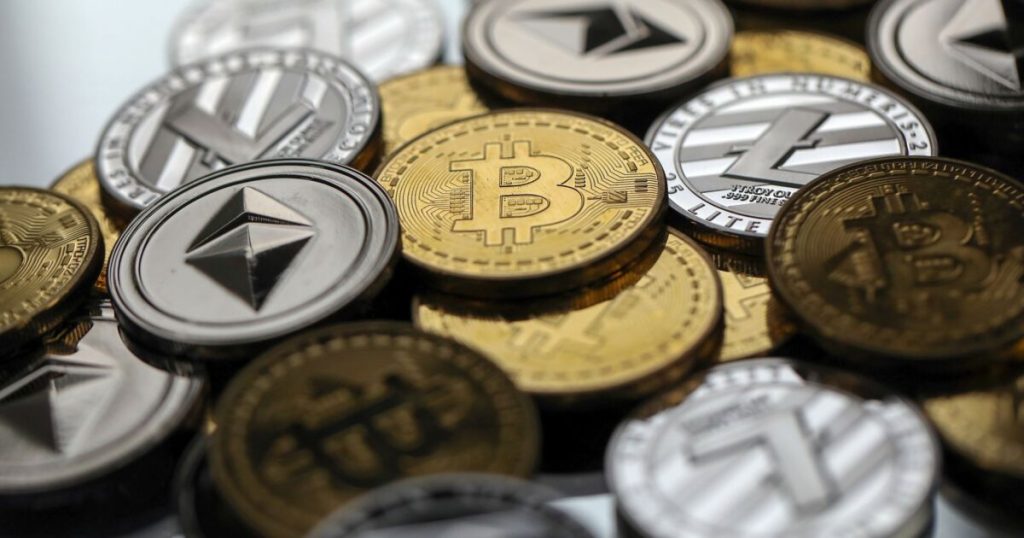Chris Ratcliffe/Bloomberg
It took the SEC all of four days under the new Trump administration to undo
Unfortunately, turning policy into action that is impactful enough to meet the admiistration’s stated goals is hard for multiple reasons. There is no question that the SEC’s revised guidance on SAB 121 is a major victory. But let’s not celebrate just yet. As this single policy point illustrates, truly unlocking participation for banks and publicly traded companies across use cases — from simple custody to real-world asset tokenization, stablecoin issuance and transactions — will require a more comprehensive set of policy changes.
First, the banking regulators still need to be convinced. The digital asset use cases I described above raise questions around novel activity and technology risks that are not present with traditional custody/safeguarding and financial (internal ledger) transactions. The management of these risks remains a salient concern for the supervisors of regulated entities — and rightly so. Banks need to demonstrate their digital assets activities are safe and sound in light of existing standards related to governance, cybersecurity and other traditional risk vectors. In other areas — such as digital asset operations and key management — regulated actors will need to stand up and integrate control processes unique to engaging with blockchain-based networks.
The sooner consensus emerges in the regulatory community around the content of these standards, the sooner we can expect to see robust and enduring adoption. Here, the digital asset industry can help. In the last year alone, the industry has created the Crypto ISAC, a member-driven, nonprofit organization dedicated to working with the government to promulgate security standards for enterprise digital asset technologies and information sharing around sensitive topics like threat detection and anti-terrorist financing. Other efforts are maturing, including around baseline standards for infrastructure technology like custody solutions and stablecoins. These standards, when sufficiently socialized and refined, could form the basis for a growing supervisory consensus to address legitimate safety and soundness concerns for bank engagement in novel activities.
The problem, unfortunately, is still more complex than that. The second policy hurdle to overcome is rooted in guidance issued by international standard setting bodies like the Bank for International Settlement regarding capital. The so-called “Basel” rules direct member countries to adopt standards for bank capital that, particularly in the case of crypto, create basic economic disincentives for banks to hold digital assets on balance sheet or even offer basic services to their customers, like custody. For example, if the United States is to realize its vision of a “digital asset” reserve, it badly needs the participation of its banking sector to provide safe and sound digital asset vaults, among other services, and this will require a fundamental rethinking of the relationship to punitive international standards, like those set by the Basel committee.
One option is for the United States to blaze its own path — and this may well happen under a Trump administration. In this case, the United States could simply adopt its own version of the capital rules and seek to exert its influence around the world on others who are similarly minded and situated. The baseline reality of such a scenario is that those who choose to follow the Basel committee rules will be stuck holding the bill — effectively left unable to compete in the digital asset space against banks that are not as constrained from a capital perspective. Less drastic solutions could include offering lower capital treatment for U.S. financial institutions that adopt digital asset-specific best practices around safety and soundness.
The third and final hurdle U.S. financial institutions still face, even after the repeal of SAB 121, is the fast-evolving market for digital asset issuance and related services itself. Stablecoins are a great example: They have already achieved product-market fit, and there are already hugely successful incumbent firms dominating the global market. The emergent space of tokenization of financial assets and the development of collateral movement represent use cases that have already made significant inroads outside of the United States and its evolving regulatory umbrella.
Still, we can catch up. The United States issued the most globally appealing financial instruments in the form of the U.S. dollar and Treasuries in the 20th century, and it dominated the rails by which those instruments moved around the world. U.S.-based firms are also already in leadership positions within the digital assets ecosystem in areas as diverse as digital asset custody, stablecoin issuance and blockchain intelligence. The repeal of SAB 121 is a major step toward realizing a continuation of that period and a sign of what may be to come. Coupled with the executive order on digital financial technology and the promise of pro-crypto leadership at U.S. agencies, the United States has a real chance to reclaim its position as a global leader in blockchain innovation.
Only four days into governing, this administration signaled its intent to make the U.S. the crypto capital of the world, and took a series of steps that set it on the path to realizing that ambitious objective. Now, the question is: Is the United States ready to take all of the steps necessary to turn crypto policy into a revolution?

